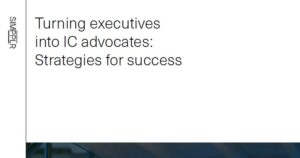Maintaining a connected culture amid extreme apprehension
Learn how to create a digital workplace that unites, encourages and energizes dispersed workers.

COVID-19 has jostled companies into an odd state of flux.
The pandemic has profoundly disrupted the bonds of office life and workplace camaraderie—leaving communicators with the Herculean task of maintaining productivity and keeping morale high.
Mary Davis Kaplan, a strategic solutions engineer with LumApps, says utility and user experience should drive all organizational decisions right now. Kaplan will join a lineup of experts at Ragan’s Oct. 14 Internal Communications & Employee Experience virtual conference, sharing how communicators can play a crucial role in maintaining morale during this tumultuous time.
Ahead of the event, she shared insights on what employee engagement strategies are working during the pandemic—and which tactics you should avoid.
Prioritizing—and optimizing—employee experience
“Make things easy on your employees,” Kaplan says, adding that employers must show empathy in meaningful ways during this continued disruption.
That might involve tweaking your technology suite to adopt software that suits the dispersed milieu. “As you audit the corporate tools you use, let the goal be to allow your employees to easily and quickly find what they need, working from anywhere, and at any time,” Kaplan says.
She adds that it’s important to maintain some semblance of normalcy and consistency amid the chaos. That’s where your vision and values must become more than mere words. “Core values and corporate culture can’t just live within the physical office,” she says, noting that communicators must consistently remind employees about expectations, company stances and big-picture objectives. Recognition is especially essential now, too, as affirmation, reassurance and encouragement tend to be contagious.
What’s coming next
There are plenty of messaging mistakes companies should avoid now. Silence is among the most damaging ways to curdle any culture, Kaplan says. If you fail to communicate consistently, or if you’re cagey, ambiguous or evasive with your messaging, employees will gladly fill that gap with gossip. That’s an easy way to create a toxic workplace—whether you’re in an office or digitally dispersed.
Kaplan believes remote work is here to stay—and that smart companies keen on recruiting, engaging and retaining top talent should plan accordingly. However, remote work has to be made more sustainable, she says, adding that employers must do more to help employees strike a healthier work/life balance. “The time we gain by not commuting, we are putting right back into our workday,” she says. To counter overwork and burnout, Kaplan foresees an increase in tools meant to improve employee experience, such as software that automatically schedules virtual coffee breaks, lunches or happy hours. Virtual events, substantive, personalized perks and employee check-ins should also continue to increase in importance.
For those struggling to keep morale afloat, the pandemic offers an opportunity for a cultural reset. Kaplan says turning a toxic culture into a healthy, vibrant one starts with open, two-way dialogue. Then, it’s about leadership listening to—and acting on—raw employee feedback. Change won’t happen overnight, but making sure employees feel heard, respected and valued is the first step toward creating a healthier environment.
Learn more ways to create a thriving digital workplace at our Oct. 14 Internal Communications & Employee Experience virtual conference. Experts will share how to boost morale during—and after—the pandemic.







